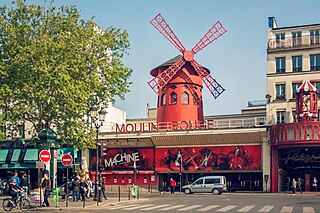
Moulin Rouge is a cabaret in Paris, on Boulevard de Clichy, at Place Blanche, the intersection of, and terminus of Rue Blanche.

Montmartre is a large hill in Paris's northern 18th arrondissement. It is 130 m (430 ft) high and gives its name to the surrounding district, part of the Right Bank. Montmartre is primarily known for its artistic history, for the white-domed Basilica of the Sacré-Cœur on its summit, and as a nightclub district.
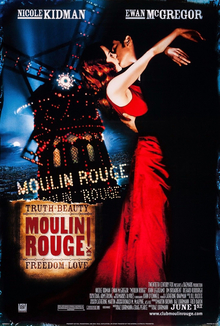
Moulin Rouge! is a 2001 jukebox musical romantic drama film directed, produced, and co-written by Baz Luhrmann. It follows an English poet, Christian, who falls in love with the star of the Moulin Rouge, cabaret actress and courtesan, Satine. The film uses the musical setting of the Montmartre Quarter of Paris and is the final part of Luhrmann's "Red Curtain Trilogy", following Strictly Ballroom (1992) and Romeo + Juliet (1996). A co-production of Australia and the United States, it features an ensemble cast starring Nicole Kidman and Ewan McGregor, with Jim Broadbent, Richard Roxburgh, John Leguizamo, Jacek Koman, and Caroline O'Connor in supporting roles.

The 18th arrondissement of Paris is one of the 20 arrondissements of the capital city of France. In spoken French, this arrondissement is referred to as dix-huitième.

The can-can is a high-energy, physically demanding dance that became a popular music-hall dance in the 1840s, continuing in popularity in French cabaret to this day. Originally danced by couples, it is now traditionally associated with a chorus line of female dancers. The main features of the dance are the vigorous manipulation of skirts and petticoats, along with high kicks, splits, and cartwheels.
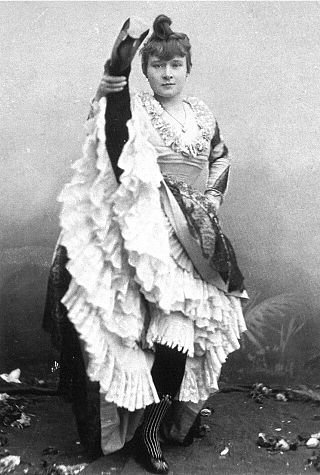
La Goulue, was the stage name of Louise Weber, a French can-can dancer who was a star of the Moulin Rouge, a popular cabaret in the Pigalle district of Paris, near Montmartre. Weber became known as La Goulue because as an adolescent, she was known for guzzling cabaret patrons' drinks while dancing. She also was referred to as the Queen of Montmartre.
The Moulin de la Galette is a windmill and associated businesses situated near the top of the district of Montmartre in Paris. Since the 17th century the windmill has been known for more than just its milling capabilities. Nineteenth-century owners and millers, the Debray family, made a brown bread, galette, which became popular and thus the name of the windmill and its businesses, which have included a famous guinguette and restaurant. In the 19th century, Le Moulin de la Galette represented diversion for Parisians seeking entertainment, a glass of wine and bread made from flour ground by the windmill. Artists, such as Renoir, van Gogh, and Pissarro have immortalized Le Moulin de la Galette; likely the most notable was Renoir's festive painting, Bal du moulin de la Galette.
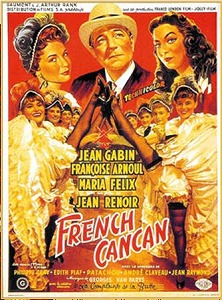
French Cancan is a 1955 French-Italian musical film written and directed by Jean Renoir and starring Jean Gabin and Francoise Arnoul. Where Renoir's previous film Le Carosse d’or had celebrated the 18th-century Italian commedia dell’arte, this work is a homage to the Parisian café-concert of the 19th century with its popular singers and dancers. Visually, the film evokes the paintings of Edgar Degas and the Impressionists, including his own father, Pierre-Auguste Renoir. It also marked his return to France and to French cinema after an exile that began in 1940.
"Non, je ne regrette rien" is a French song composed in 1956 by Charles Dumont, with lyrics by Michel Vaucaire. Édith Piaf's 1960 recording spent seven weeks atop the French Singles & Airplay Reviews chart.
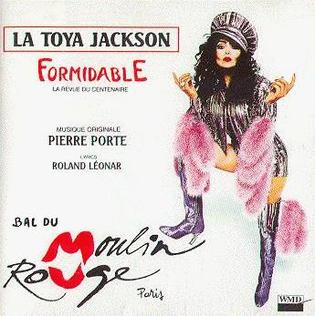
Formidable is the soundtrack to the show performed at the Moulin Rouge in Paris, France by American singer La Toya Jackson. Only 3,000 copies were created and it has become one of the most sought-after albums by her fans.
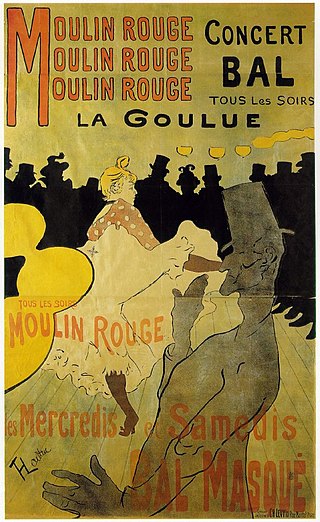
Valentin le Désossé was the stage name of Jacques Renaudin, a French can-can dancer who was a star of the Moulin Rouge in the 1890s as the partner of Louise Weber, known as La Goulue.

The Musée de Montmartre is located in Montmartre, at 8-14 rue Cortot in the 18th (XVIII) arrondissement of Paris, France. It was founded in 1960 and was classified as a Musée de France in 2003. The buildings were formerly the home of several famous artists, including Pierre-Auguste Renoir and Suzanne Valadon.

Le Moulin de la Galette is the title of several paintings made by Vincent van Gogh in 1886 of a windmill, the Moulin de la Galette, which was near Van Gogh and his brother Theo's apartment in Montmartre. The owners of the windmill maximized the view on the butte overlooking Paris, creating a terrace for viewing and a dance hall for entertainment.
Pierre Kast was a French screenwriter, film and television director, and freedom fighter.
Michel Vaucaire was a French lyricist. He often collaborated with the composer Charles Dumont in whom he always had confidence to put his lyrics to music. He is perhaps best known as the author of "Non, je ne regrette rien", written in 1956, with its most notable recording completed in 1960 by singer Edith Piaf.

The Montmartre paintings are a group of works that Vincent van Gogh created in 1886 and 1887 of the Paris district of Montmartre while living there, at 54 Rue Lepic, with his brother Theo. Rather than capture urban settings in Paris, van Gogh preferred pastoral scenes, such as Montmartre and Asnières in the northwest suburbs. Of the two years in Paris, the work from 1886 often has the dark, somber tones of his early works from the Netherlands and Brussels. By the spring of 1887, van Gogh embraced use of color and light and created his own brushstroke techniques based upon Impressionism and Pointillism. The works in the series provide examples of his work during that period of time and the progression he made as an artist.

Moulin Rouge: La Goulue is a poster by French artist Henri de Toulouse-Lautrec. It is a colour lithograph from 1891, probably printed in about 3,000 copies, advertising the famous dancers La Goulue and "No-Bones" Valentin, and the new Paris dance hall Moulin Rouge. Although most examples were pasted as advertising posters and lost, surviving examples are in the collection of the Indianapolis Museum of Art and many other institutions.
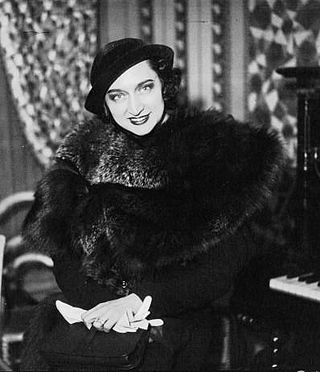
Lys Gauty was a French cabaret singer and actress. Her most significant work came in the 1930s and 1940s as Gauty appeared in film, and recorded her best-known song, "Le Chaland qui passe", which is an interpretation of an Italian composition.
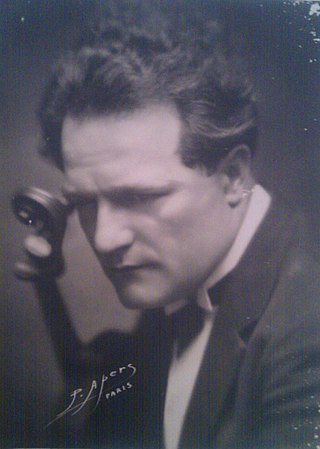
Mario Cazes, was a 20th-century French composer, conductor and violinist extremely popular during the 1920s and 1930s.
















